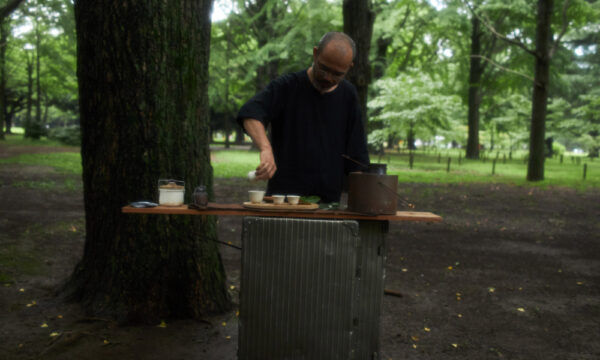
Ceramic artisan Takashi Ichikawa’s lessons with tea (2nd half)
2021.07.16
- Kamairi (Pan-fired) Tea
- Shiga
Takashi Ichikawa is a potter who works out of a studio at the foot of Mount Ibuki in Shiga Prefecture. My first encounter with Ichikawa came when I saw the “chaguruma” tea set he made (to be precise, it was multiple tea sets) as part of a magazine photo shoot, at which time I was also privileged to taste the tea he brewed for us. It was exactly one year ago, but it was an experience that will live with me forever.
Renowned for both his skill and artistry as a potter and his distinctive vision and pioneering spirit as a teamaker, Ichikawa has held several exhibitions and shows throughout Japan, from his home of Shiga to Kyushu, Kyoto, Tokyo and Sendai, and even abroad, particularly in Taiwan and China. It is difficult to describe what a unique figure Ichikawa is in the pottery and tea-making worlds – to truly appreciate his brilliance, you need to experience his work for yourself.
Wishing to savor once more the unparalleled experience Ichikawa provides, I have attended a number of his shows since our first meeting. This time, I sat down with Ichikawa for an interview following the conclusion of a private exhibition in Minami-Aoyama. While I realize that giving my readers an understanding of Ichikawa’s unique worldview may be a task beyond my abilities, I felt that through the medium of tea, he had taught me a truly valuable lesson that I hope to share with you all.
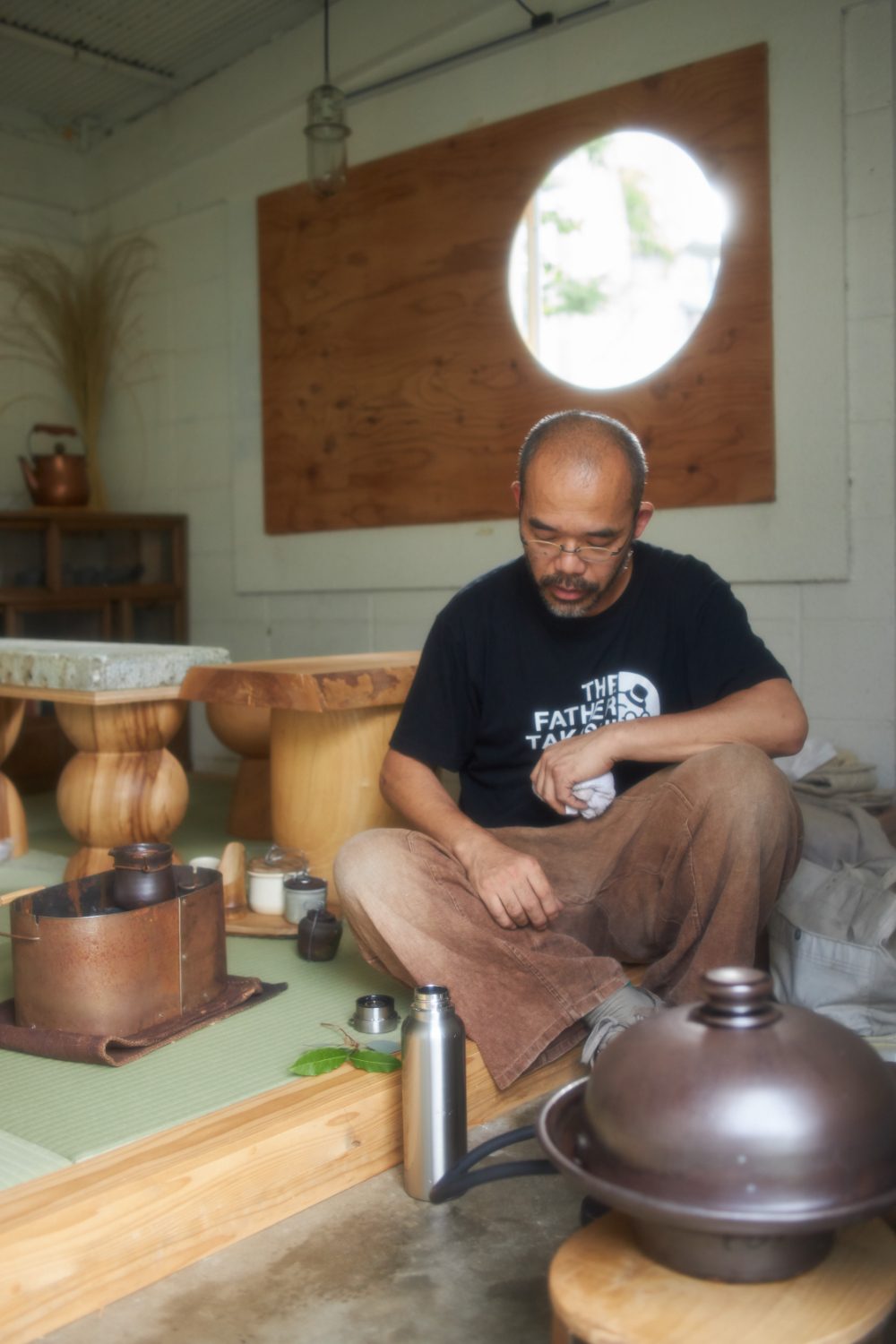
Based around the central theme of food and drink, Ichikawa makes a wide range of ceramics – his creations run the gamut from everyday crockery such as rice bowls, flat plates, and side dishes, to specialist items such as teacups, lidded cups, dobin teapots, and tea kettles, to larger items such as stewing pots, distillery equipment, smokers, and even charcoal stoves. Every single item is hand-crafted by Ichikawa himself.
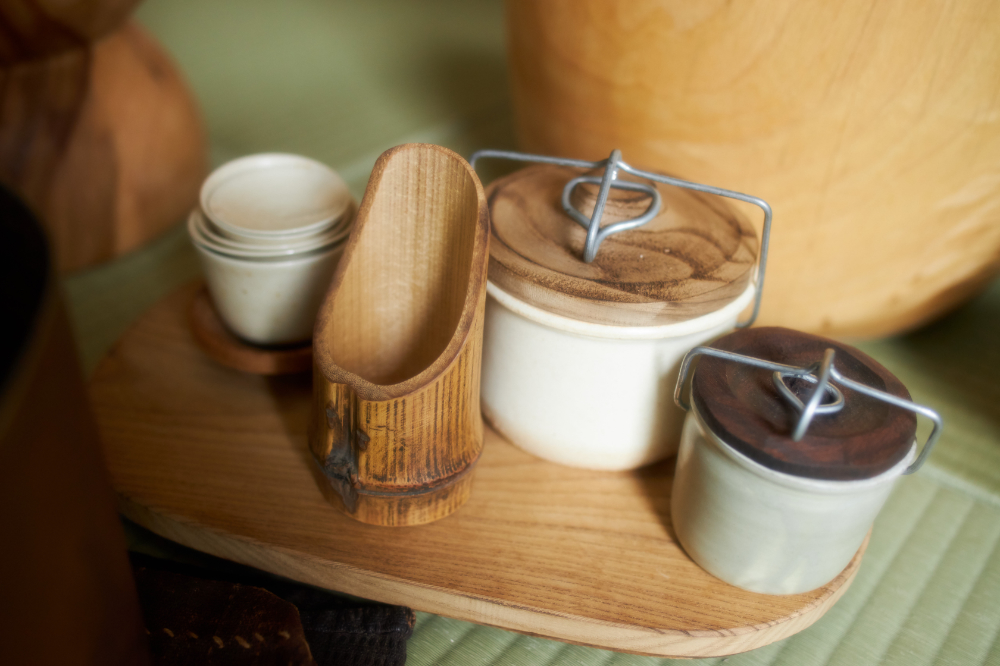
“I guess I just find myself interested in a lot of different things,” he explains with a self-deprecating laugh.
“Whether it’s carving wood or bending metal, it doesn’t feel to me like I’m doing anything special or out of the ordinary. I guess it’s because of my background in sculpture. Rather than use a machine to cut something cleanly, I would prefer to make an effort to use scissors. Or I see bending something awkwardly as having a greater sense of authenticity. Rather than striving for perfection, I like to have that kind of awkwardness in my creations; I like people to be able to look at them and think, hey, I could do that.”
It is undoubtedly true that Ichikawa’s wares often have a rusticity or handmade feel that makes you see the finished product as an extension of the creation process and closes the gap between artist and user.
“That’s what I’m going for. Letting it rust just a little, or whatever, allows the item to blend in more smoothly with its surroundings. It’s more fun that way.”
In addition to their practical application as everyday tools or utensils, the other characteristic of Ichikawa’s works is that they bring out the beauty in their surroundings by blending into their environment.
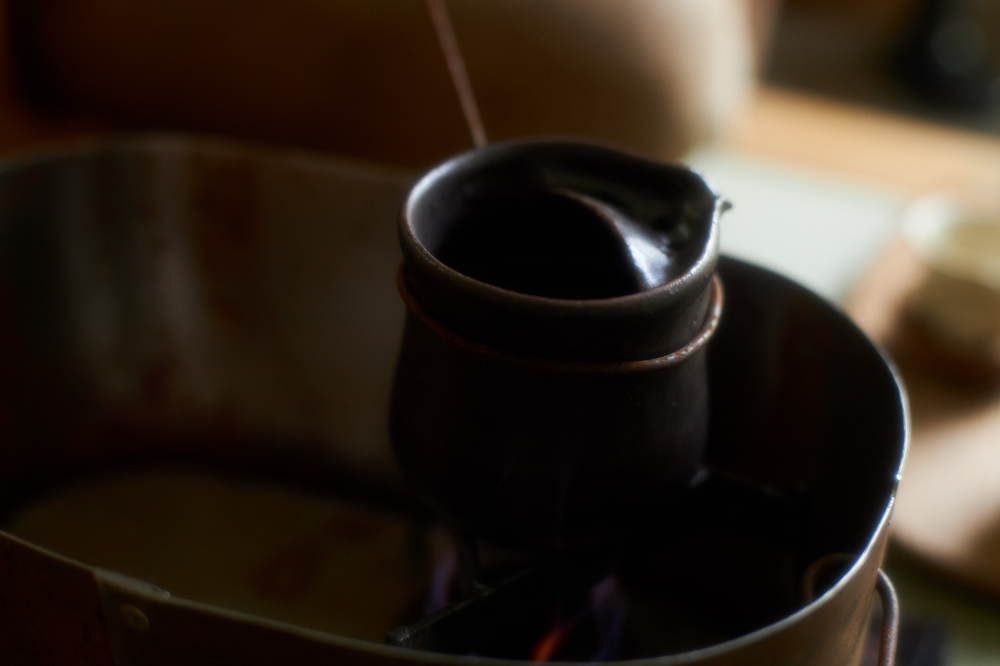
Ichikawa lays out his wares in the tearoom where we are to conduct our interview. Floored with tatami mats, the room is furnished with a table and chairs for brewing and drinking tea, but Ichikawa sits in the entranceway, where guests normally remove their shoes to enter. He begins making the tea right there.
“This room is somehow too formal for me. It’s a place for the partaking of tea, no matter who’s sitting in it, don’t you think?”
Ichikawa laughs, glancing in an almost embarrassed way at the table and chairs. I am taken aback.
“When I’m looking to feel that specialness of tea, I feel like all I need is some item to act as a switch, something to turn wherever I am into my own little experimental studio. I feel that suits me more than a proper tearoom… I’ll leave the formality of the tearoom to others.”
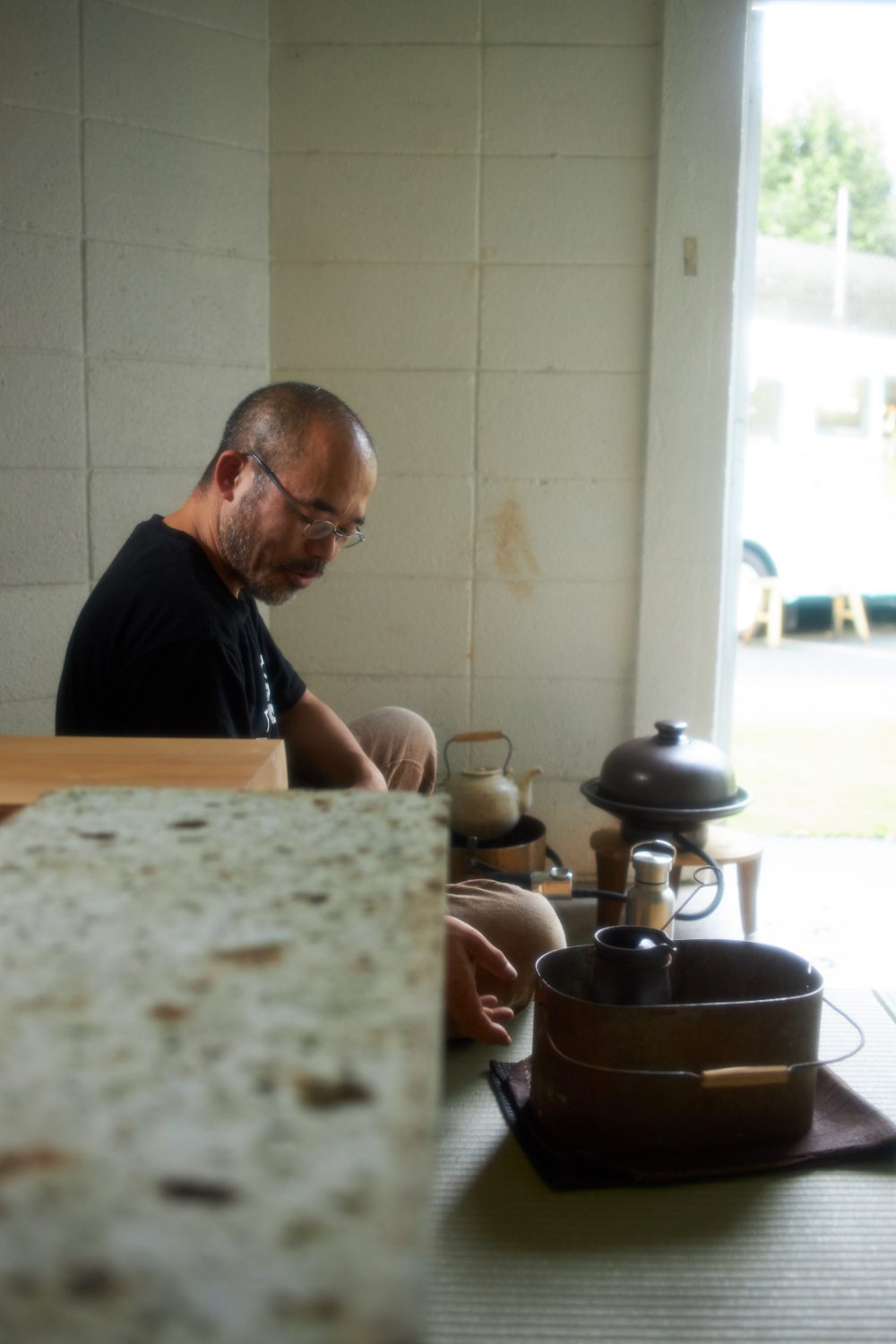
Originally a sculptor, Ichikawa’s work was widely acclaimed, even claiming several prizes. It was when he fell into something of a slump and lost sight of what it was he wanted to do, that he found the worlds of cuisine and tea that gave him a new starting point, and opened his eyes once more.
“Each new encounter I have has a story behind it. Whenever I follow that story back to its source, I learn something new. Take cooking, for example – I find that if I take the time to look hard at the things around me, I can discover something fascinating. After embarking on my path as a potter, it was really my discovery of tea that brought about a big change within me. Particularly Taiwanese tea, through which I felt a sense of freedom, and Chinese tea, from which I sensed rich abundance. My encounter with the different varieties of tea made me realize anew that tea is, of course, nothing more than a plant. I realized that if I think of tea as the leaves of a plant, that creates something I can play with as well.”
In June of this year, a special Chayuuki tea party was held at Kumamoto’s Taishoji temple. Chayuuki is the name of a group launched by Ichikawa, together with other luminaries of the tea world,including Naoko Ideno and Ichiko Horiguchi, as an opportunity to enjoy the playful side of tea. While in Kyushu, Ichikawa gathered a range of teas from around the region; today, he has been gracious enough to brew three different types of tea from Kumamoto for me.
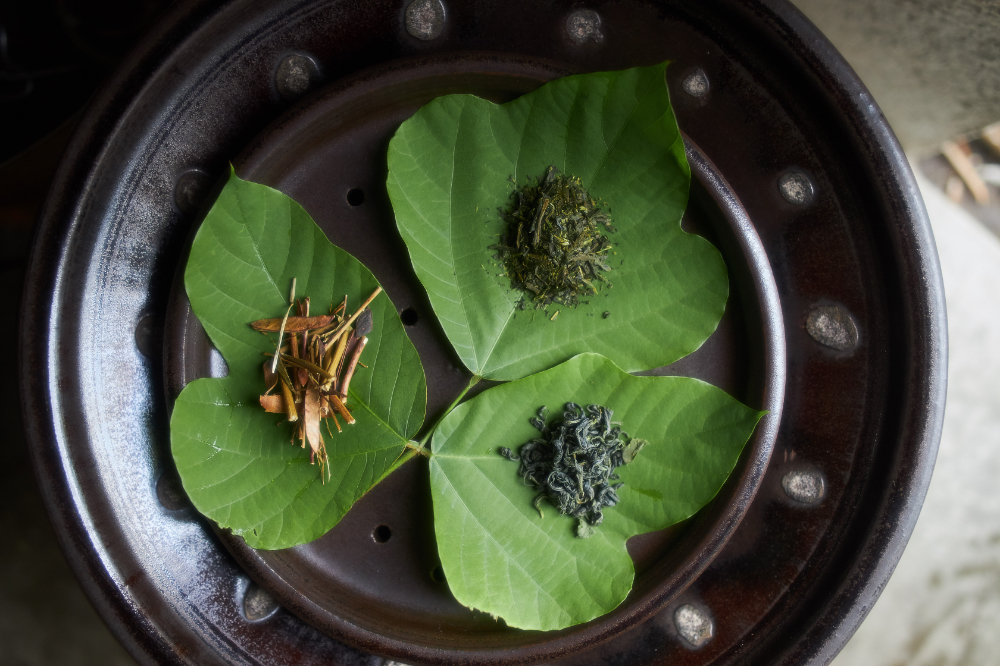
The above photograph shows the leaves of these three teas: natural green tea from Annapurna Farms (top), a hand-picked pan-fired tea known as Miyama from Kajihara Tea Garden (bottom right), and a wild grass tea blend from Mori to Tane to Ocha (left).
Plucking some large leaves from the garden to serve as caddy spoons for the tea leaves, Ichikawa then places them in his dark brown smoker. I’m fascinated to see just how he is going to play with this tea.
“One of the key characteristics of tea leaves is that they absorb smells. That’s actually seen as a defect (in that the aroma can be contaminated). But jasmine tea, for example, takes that defect and makes it a virtue. So along those same lines, I wondered what would happen if I smoked them.”
Who would even think of putting tea leaves in a smoker? Gazing at the tendrils of smoke curling from the smoker, I wonder what this tea will taste like… I am already being drawn in to Ichikawa’s world.
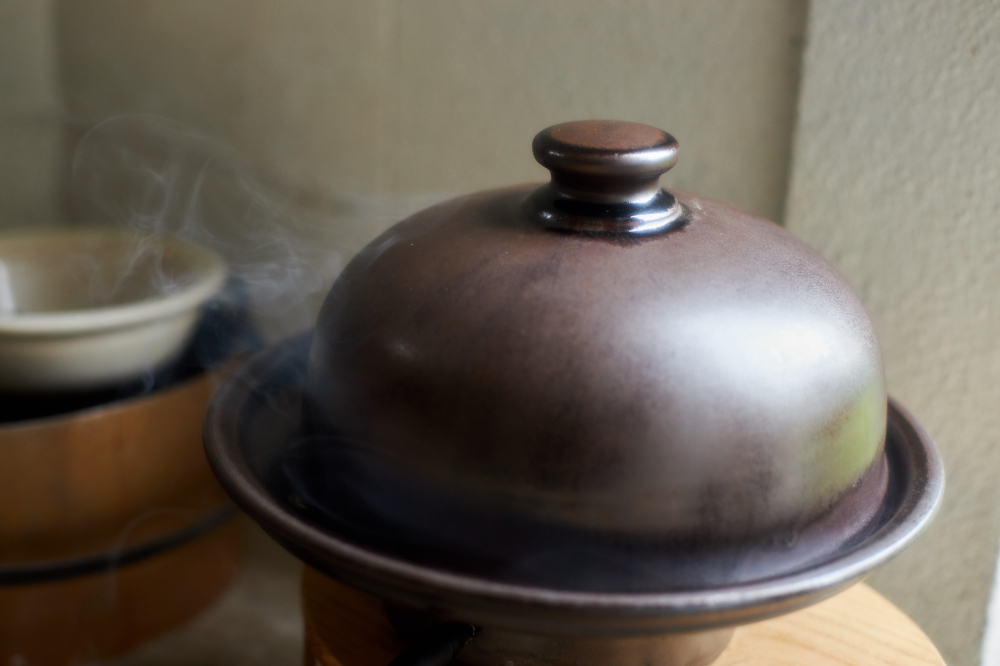
“Even a simple thing like this is enough to arouse curiosity about what might happen. I like to drink with people who are sponges, like me. People who have a desire to absorb something new. I feel like we can have a conversation where we each test the limits of what we think we know.”
As the smoky aroma strikes our nostrils, Ichikawa and I give off a small cry of surprise. He looks like he is having such fun; for my part, I feel delighted to share this moment of play with him.
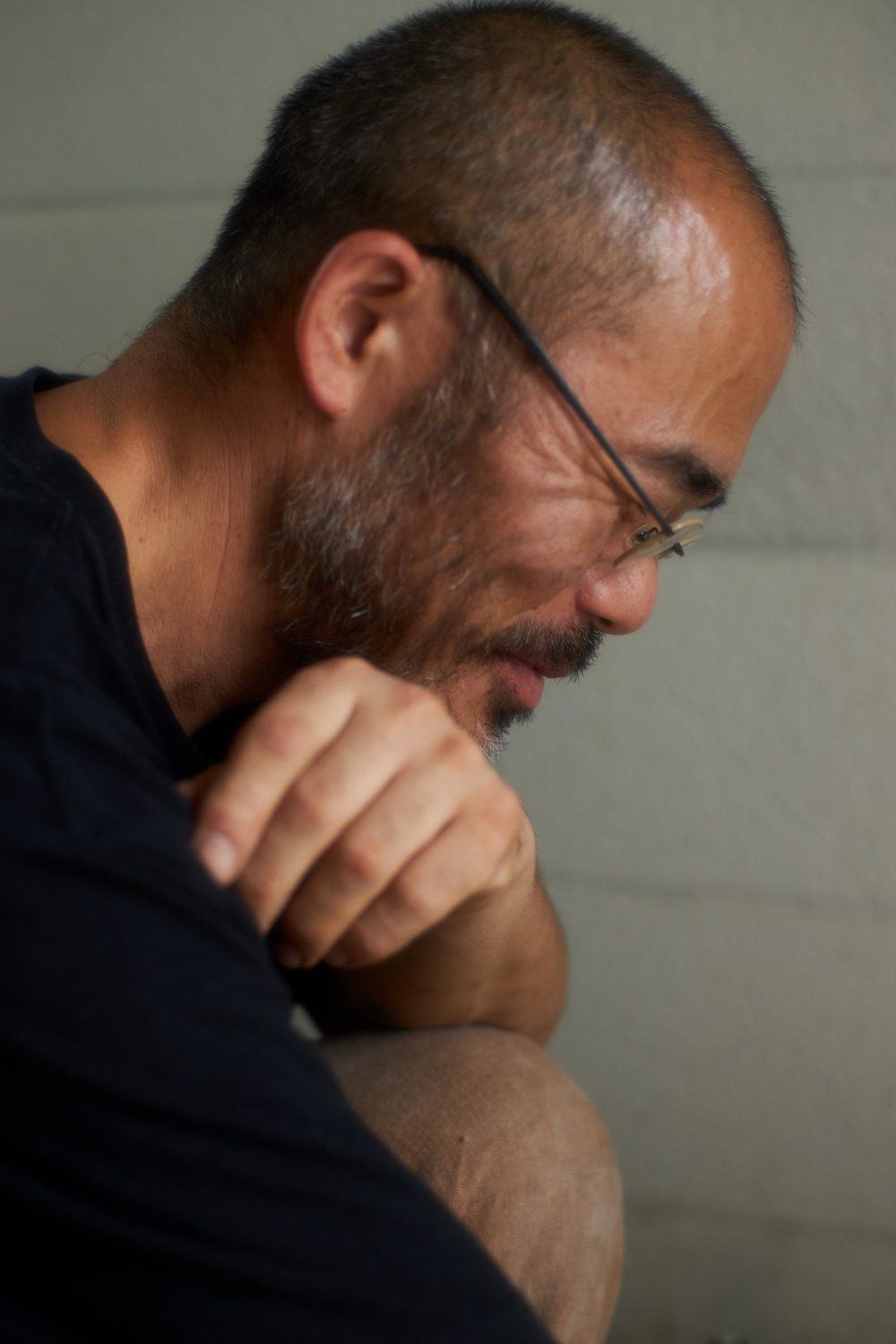
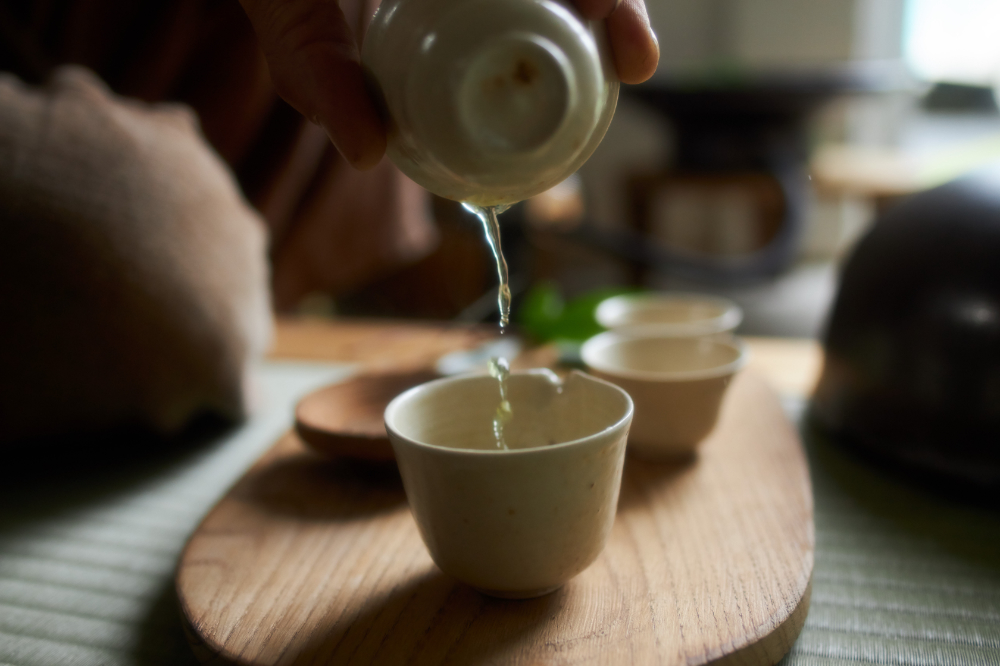
“I think it’s about time to brew them now. These teacups, by the way, may seem pretty small, but you’ll find once you drink from them that they contain plenty.”
fills my mouth. I can’t help but break into a grin. This is fun. The aftertaste fades nicely, making me think Ichikawa must have smoked the leaves for precisely the right length of time. I’ve already been drawn in to thinking like Ichikawa, and I find myself enjoying working out how to fine-tune this experience further.
Still, I can’t help but feel that playing around like this isn’t actually as easy as he makes it look.
“You’re right,” agrees Ichikawa. “It’s actually really hard work. The older you get, and the more experience you accrue, you develop a lot of concepts that become immovable. Moving those immovable concepts requires a lot of energy. You really do need a lot of vitality to play around like this.”
Like a wide range of other specialist worlds, the world of tea is based on hundreds of years of tradition. Many would envy someone like Ichikawa, who can take these somewhat stiff and starchy traditions and find a way within them to play with freedom and joy. While Ichikawa understands that perspective, the whole process is a little more natural to him. He simply takes inspiration from what he finds in his surroundings and allows himself to think about the possibilities if he were to try something new. He sees the pottery he makes as the tools he needs for his fun little experiments.
“It makes it easier to look at it that way – it lowers the bar, if you like. In terms of the consideration of the best techniques for classic tea-making – I leave that sort of thing to the professionals. I just try to look afresh at the things I see around me, and play a little with tea leaves or plants. I find that it teaches me a lot. I understand more about tea, or about coffee, or I realize that my new technique doesn’t work and that there is a reason why things have always been done a certain way. I don’t know why, but for me, I don’t really care as long as it’s interesting. That’s why all I need is this much space,” he says, gesturing to the little entranceway where we are. “I don’t need a proper tearoom… Okay, are you ready to move on to the next one?”
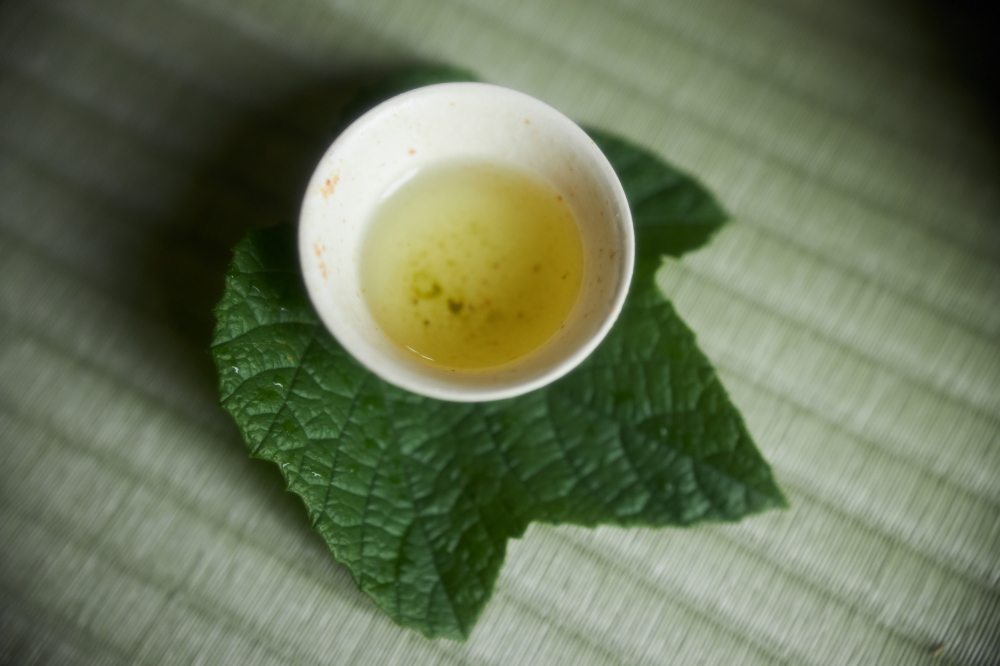
My teatime with Takashi Ichikawa continues in the second half of the article.
Takashi Ichikawa
Born in Shiga Prefecture in 1967. After learning sculpture, he took a job in a pottery, following which he embarked on his own career as a potter. Since building his own kiln in the town of Ibuki, he has held several exhibitions of his wares throughout Japan and overseas. His unique take on tea brewing, drawing inspiration from plants and items in his immediate environment and based on the traditions of Chinese gongfu tea ceremony, has drawn high praise. His latest exhibition begins on August 7th in the Tokinokumo Gallery in Shiga Prefecture.
instagram.com/takashi_ichikawa1212
tokinokumo.com(Takashi Ichikawa Exhibition, August 7th to 15th)
Photo: Yu Inohara (TRON)
Text (originally in Japanese): Yoshiki Tatezaki
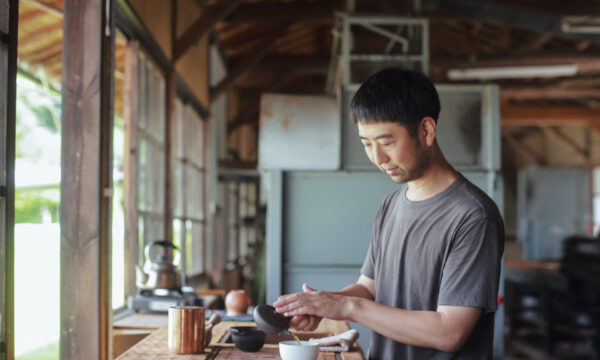
2024.09.20 Tea CraftsmenINTERVIEW
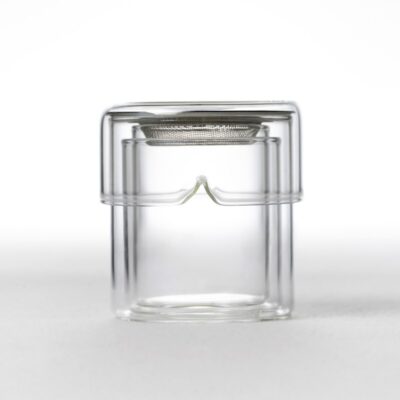
内容:フルセット(グラス3種、急須、茶漉し)
タイプ:茶器
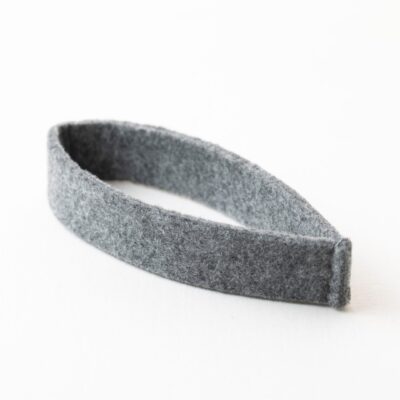
内容:スリーブ×1種(素材 ポリエステル 100%)
タイプ:カスタムツール